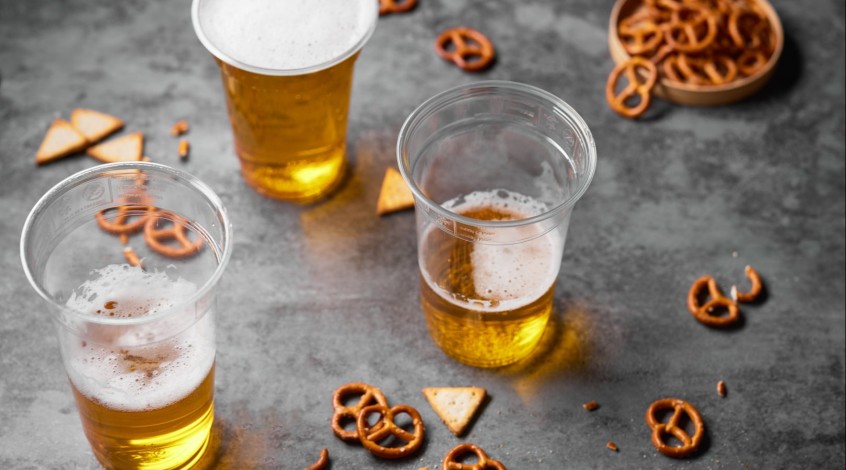About this article
All plastics have their strengths and weaknesses. These must be weighed when purchasing products for your foodservice business, especially when considering sourcing, use, and end-of-life. Let’s take a closer look at two common materials: PLA and rPET.
What’s PLA?
PLA (Polylactic Acid) is one of several bioplastics currently on the market. Like all other bioplastics, PLA is still technically plastic; the main difference is that it is produced from renewable resources. Instead of fossil fuels, this bioplastic is made from waste left over after the cultivation and processing of corn starch, sugar cane, sugar beet, or cassava. PLA is also applied as a lining on paper and cardboard packaging, like our PLA-lined soup and snack tubs. This ensures a leak-proof seal for hot and cold foods.
What’s rPET?
rPET is recycled PET (polyethylene terephthalate), a popular replacement for virgin PET. If you correctly recycle a PET item (think water bottles), it gets ground up and melted into rPET pellets. These pellets are derived from both consumer and industrial waste. And they can then be moulded into many shapes – including our cold cups, cup lids, and takeaway containers – while retaining similar characteristics to PET packaging.
Having highlighted these differences in composition, let’s dive deeper so you can determine which packaging options are best suited for your foodservice business.
PLA as food packaging and tableware

Advantages
-
Made from renewable materials (biomass).
-
Made from the waste products of existing food processing.
-
End-of-life: Industrially compostable and sometimes recyclable (depending on local waste management facilities).
-
Transparent and rigid – e.g., great for salad containers, straws, bags, and cups.
Challenges
-
In high demand but short supply.
-
As a bioplastic, it is still impacted by the EU’s Single-Use Plastics Directive. This means that some PLA products, like PLA straws and cutlery, are banned while PLA-lined cups must carry the turtle logo.
-
The material can be sensitive and difficult to use at times (e.g., heat sensitive or difficult to store).
-
Is not compostable in a garden bin because temperatures will not get hot enough – it needs precise heat and moisture conditions to break down.
-
Since it looks similar to rPET and PET cups, there is a risk that they will be placed in the recycling bin or otherwise improperly disposed of. This is not ideal because it can dilute recycling streams or accidentally ends up in landfill rather than with food waste for industrial composting.
rPET as food packaging and tableware

Advantages
-
Reuses an already existing material, which is important for circularity.
-
End-of-life: Widely recyclable in a majority of waste streams.
-
Globally, PET bottles are the most widely recycled product. India, Europe, and South Korea all have PET recycling rates higher than 50%. The majority of the collected PET is recycled back into plastic while a significant proportion is made into textiles (think fleece and clothes, carpets, backpacks, etc.).
-
It is sturdy, freezable, durable, and offers a good seal that keeps food fresh.
Challenges
-
In high demand but short supply.
-
Not always made from 100% recycled content – small amounts of virgin PET are added to ensure food-grade certification.
-
It is also impacted by the EU’s Single-Use Plastics Directive. This means that some rPET products, like straws and cutlery, are banned while cups made from rPET must carry the turtle logo.
-
The more times it’s recycled it begins to lose its transparency, which is not ideal for food packaging.
-
The more recycled content an item contains, the “weaker” the product is – meaning more rPET pellets are needed to achieve the same level of quality.
-
Without strict guidelines and no minimum requirement for recycled content, “made from recycled plastic” marketing can be misleading. That is why Verive has committed to a minimum of 51% recycled content in its rPET products.
Unsure which materials and products are best for your catering or hospitality business? Our team is ready to answer any question and offer bespoke advice based on your business’s applications. Reach out today, and we will get back to you quickly.










